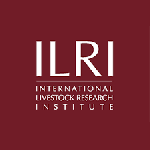CGIAR Research Program on Grain Legumes and Dryland Cereals - GLDC
Overview: FP4-1.19 - Development of mobile sensors for estimation of stover and grain compositions
Leader:
Sunita Choudhary, International Crops Research Institute for the Semi-Arid Tropics - ICRISAT
Coleader: Jana Kholova, International Crops Research Institute for the Semi-Arid Tropics - ICRISAT
Team
members: 5
Partner
organizations: 4
Budget 2025
USD :
0
Outputs: 0
Activity/Product Description
Quality traits become more and more important in CGIAR mandate crops, pushed by end user demand for a series of products that involve quality in either grain, crop residue, of tuber. Quality traits then become “must-have” breeding targets. Deliberate crossings need to be made to harness quality and quality evaluation needs to be taken on board by the breeding programs. However, measuring quality is quite different from measuring yield: it involves a quite different skill set, touches on very different disciplines, has a number of logistical and engineering implications around collecting both yield and quality information. Therefore, looking beyond yield, there are large “system gains” that can be made from improving the crop quality, and that need to become a central focus for breeding programs. Part of the reason for the current disconnect between traditional target traits for breeding and quality traits lays in the phenotyping of quality traits. These are usually measured after harvest and involve a step of processing of the samples and analysis by specialized equipment such as NIRS or XRF. . In summary, current harvest processes are cumbersome, imprecise (moisture adjustment), prone to error (sub-sampling stover), time consuming (several handling steps), and not instant (weeks to months after harvest until data are fully recorded). Therefore, solutions are needed to streamline the harvest processes, and align the measurement of quality traits in the breeding process, essentially by measuring quality at the field level, when other agronomic traits are measured.
Atlas
Personnel Involved
Partners







